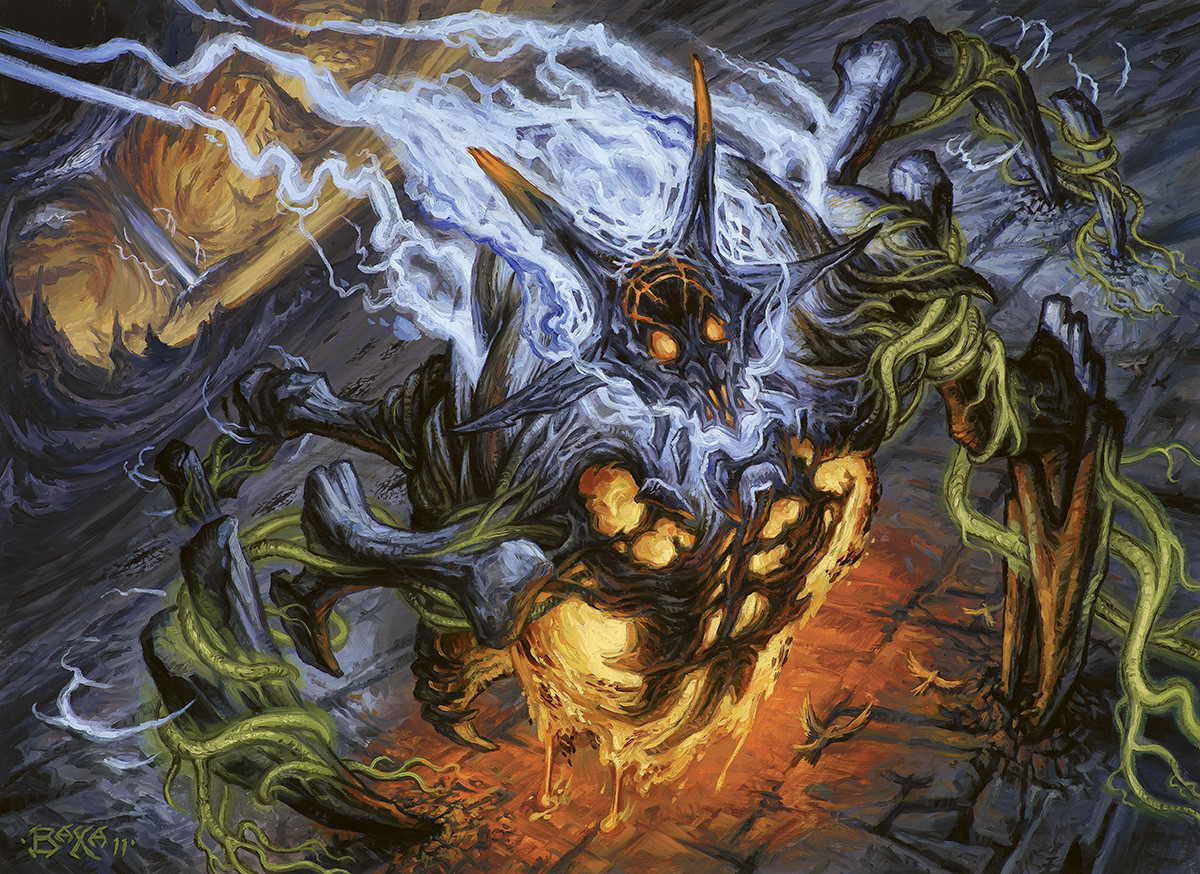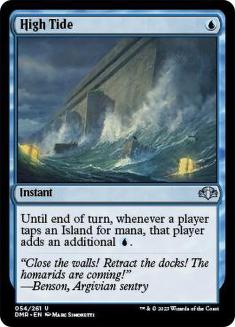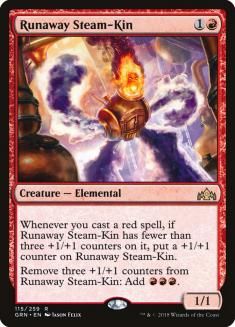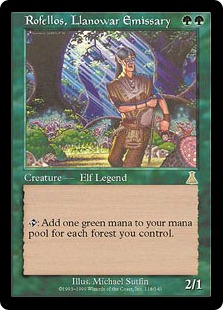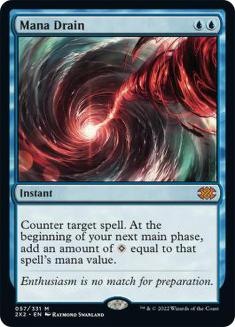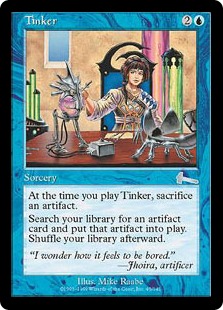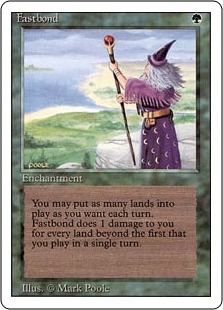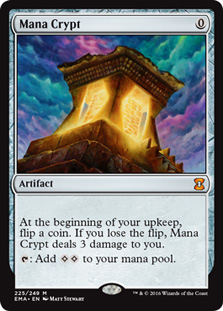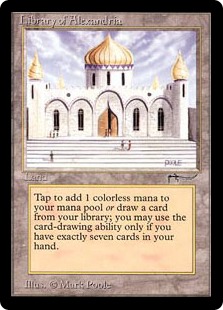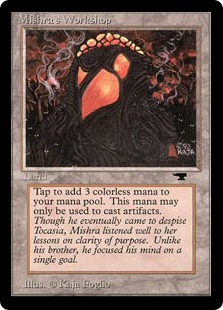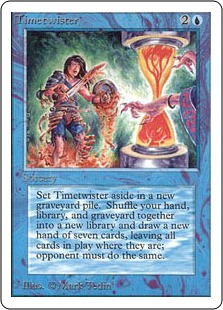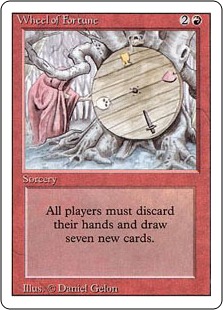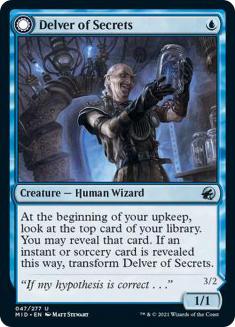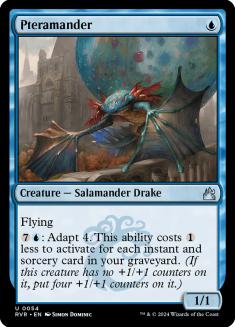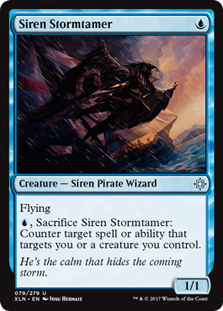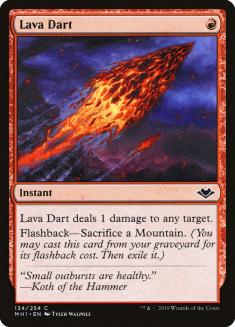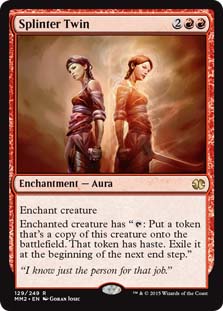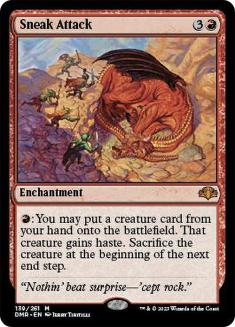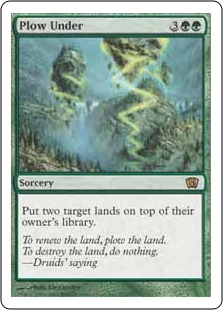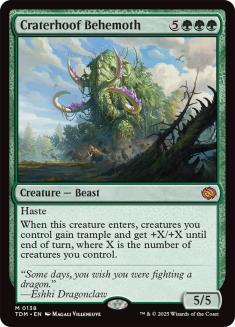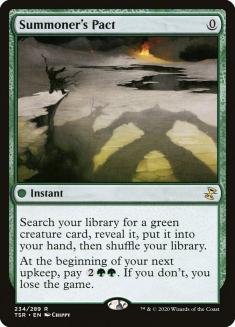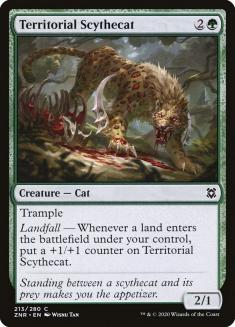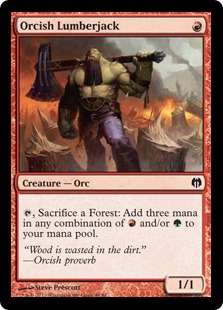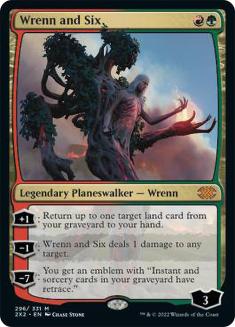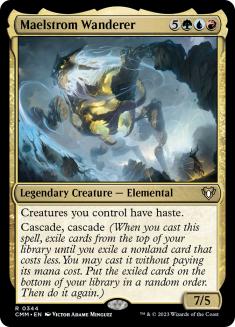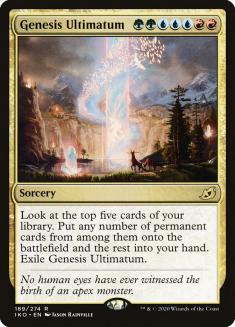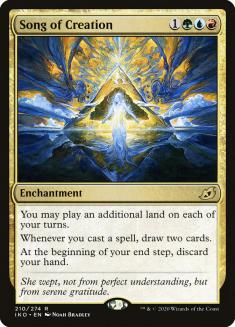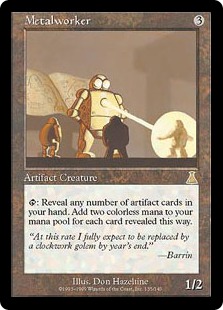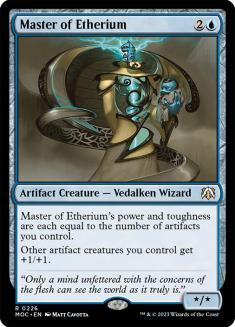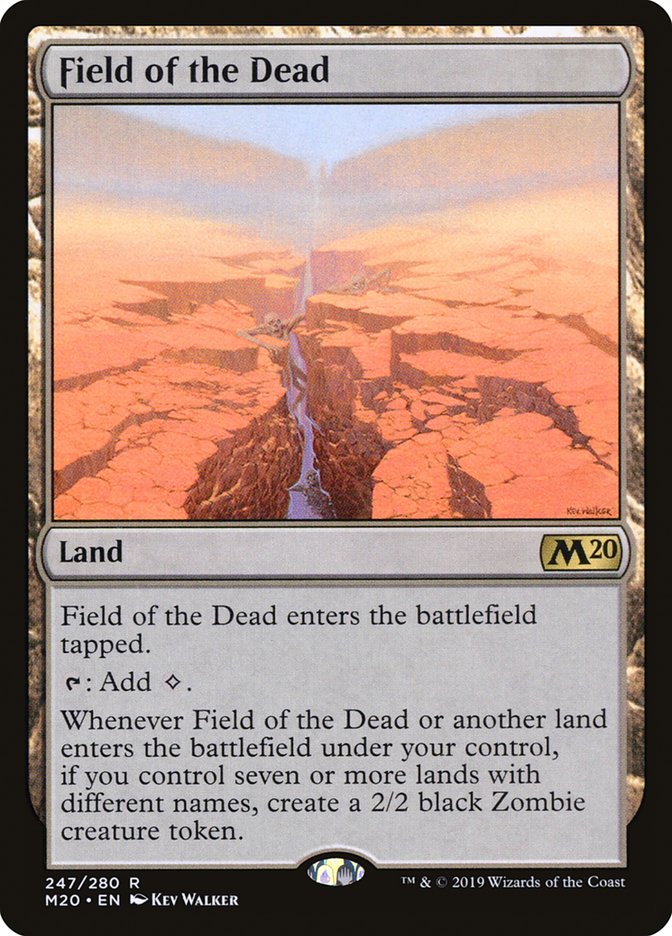After a couple weeks off, it is my great pleasure to once again grace your screen to give you the scoop on the new Magic Online (MTGO) Cube. If you haven’t heard, we’ll be battling with Elizabeth Rice’s Temur Cube for the next week. Vintage Cube Supreme Draft actually drained most of my interest in the traditional MTGO Vintage Cube by offering a way to play the Cube where you never have to run creatures with power and toughness, so I’m pretty excited for this change of pace.
I’ve gone ahead and ported the Temur Cube list into Cube Cobra so that it could easily be parsed. There’s quite a lot to go over in terms of supported archetypes and card inclusions, though first I’d like to offer some insights that might not be obvious if you’ve never played a three-color Cube before.
As the progenitor of Grixis Cube, a lot of my initial motivation was that high-power environments don’t really lose much mechanically if you remove green and white cards. Temur Cube differs from this slightly, as efficient, unconditional removal is only going to be available in the form of counterspells and Control Magic effects. In common Cube fashion, blue is fairly convincingly the best color in this Cube. We’ll get into the particulars on that later.
The major basic principle to understand when approaching drafting a three-color Cube is that it is easier to be mono-color or to be three-color than normal. A higher percentage of the cards will be castable in your mono-color deck and all of the lands will fix your mana if you’re three-color. As such, it’s much more important to be able to compare cards across colors in terms of individual card quality and to understand which archetypes are better off trying to be mono-color. The cards that incentivize drafting mono-color tend to do so fairly loudly, which you’ll want to have in the back of your mind while you draft.
Temur Cube isn’t incredibly heavy on these sorts of cards, but castability is a good tiebreaker when you’re choosing between two cards that are close on power level. It’s not trivial to just throw Courser of Kruphix and Teferi, Mage of Zhalfir in the same deck and expect to be able to cast both on time. It’s also good to keep in mind that the Cube is very heavy on artifacts with an artifacts-matter theme, and that valuing artifacts more highly when you want to draft a mono-color deck is likely to reward you with a powerful and consistent deck.
One last thing that I want to note before I get into how to approach drafting the three colors of the Cube is that there are a handful of significant power outliers in the Cube. There are none of the original Moxen, Ancestral Recall, or Time Walk, but the weakest piece of the Power 9 in Timetwister is available along with some other cards that are plainly the most powerful cards in the Cube:
Some of these, like Mishra’s Workshop and Fastbond, aren’t wise to just toss in any deck — you’ll need a plan to properly utilize them — but all of these cards will lead to some easy wins. It’s honestly a bit surprising to see Mana Drain, Mana Crypt, Library of Alexandria, and Tinker making the cut, and I would go pretty far out of my way to never pass them. Timetwister and Wheel of Fortune aren’t quite on that level, but any deck built around generating an early mana or battlefield advantage will likely want to take them very highly.
With these general ideas in mind, let’s talk about how to approach drafting each color in Temur Cube.
Blue
Blue has the lion’s share of the most broken cards in the Cube, and a lot of individual cards like Mystic Confluence and Sublime Epiphany are also total Cube monsters. Blue has plenty of great interactive tools, and a plenty of cards that are capable of winning the game on their own.
Broadly speaking, blue is largely a combo and control color in this Cube. When things like Splinter Twin combo; Tinker; Urza, Lord High Artificer; and Upheaval are available, I would endeavor to never play a strictly aggressive blue creature. I make no apologies to Delver of Secrets.
An interesting element of three-color Cubes is that a number of cards that you don’t see in other Cubes invariably show up. For cards like Unsubstantiate, it’s because they’re quite a bit worse than most of the cards in the Cube. For cards like Reality Shift, they’re trying to fill a hole left by the absent colors. And some cards actually just become bonkers good when your opponent is more likely to be playing specific colors and strategies. Hydroblast will be great when it has targets, I would maindeck Aether Gust more often than not in this environment, and I’d always start Mystical Dispute.
Generally speaking, I would draft blue in Temur Cube more or less the same way that you would draft it in Legacy or Vintage Cube. The most powerful cards are mostly the same, after all. Card advantage, counterspells, and Control Magics are as good here as anywhere, and I’m pretty convinced that Jace, Wielder of Mysteries is a legitimate win condition for blue control decks.
Lastly, I want to say that the card Show and Tell actually looks relevantly more powerful in this environment than it does in Legacy or Vintage Cube. Part of it is that your opponent is less likely to put something as good as you are onto the battlefield given the absence of a Reanimator strategy, and part of it is that the inclusion of Omniscience gives you a card that is way more likely to win the game immediately than the usual suspects. Just one more reason to try to draft a blue-based combo deck in this Cube.
Red
Finally, a Cube with enough one-drops to reliably force Mono-Red Aggro! A lot of players don’t consider mono-red to be as cool as attempting a Timetwister / Molten Psyche combo deck, but I do, and dammit, Mono-Red Aggro decks get results!
The bulk of the red cards in the Cube are geared towards aggressive strategies, but red also has to pick up a lot of the slack for control decks absent black and white cards. The green ramp decks threaten to go big quickly, and red removal aims to do the heavy lifting of keeping those decks in check. Prowess players know full well how much better Lava Dart is than Lava Spike and you’ll see that in action in this Cube when you’re threatened by a curve of Llanowar Elves into Rofellos.
Beyond that, red also has some of the best combo cards in the Cube. The aforementioned Splinter Twin tends to be a crowd-pleaser, and Sneak Attack is one of the most powerful all-time “one-card combo” Cube cards. Sneak Attack is a little weaker with no shot of sneaking in a Griselbrand, but the absence of Griselbrand and Reanimator decks is also great news for red decks broadly, as Iona, Shield of Emeria and Griselbrand tend to be the natural predators of red decks in high-powered Cubes.
Storm occupies an interesting space in the Cube, in that black rituals and Yawgmoth’s Will are commonly the most important cards for supporting Storm. Temur Cube pushes these decks more in the mono-blue direction, though the red Rituals are out in force and do the job well enough.
The big Storm card to note in red is Underworld Breach. Underworld Breach had a short-lived run in the MTGO Vintage Cube and is completely busted if you can combine it with Lion’s Eye Diamond, especially if you have a Brain Freeze to add to the mix. Brain Freezing yourself enough times to completely mill your opponent is pretty easy with this combination, and in the case of opposing Eldrazi, two or three escaped Grapeshots should do the trick.
I generally like the position of red in Temur Cube given that cheap threats go under counterspells and cheap burn spells can cut down ramp strategies before they get off the ground. Cards like Glorybringer and Inferno Titan also do a great job of quickly ending games while also stifling your opponent’s development. You do have to be wary of the best blue cards being better than the best red cards and the high-toughness green creatures though.
Green
Where I find red to be useful in the three major macro-archetypes, I mostly see green in Temur Cube as a combo color. There are some reasonable beatdown cards, and I imagine Gruul could do some smashing, though I’m more wary about the castability of Barkhide Troll than I am excited about the idea of actually casting it (sorry Cedric).
Generally speaking, my aim for any green deck in this Cube is pretty similar to my aim for green decks in Vintage Cube. I want to cast something that wins the game on its own, with my decks being classifiable as combo. Plow Under definitely ranks in terms of cards that can win the game on resolution, though generally I’m hoping that my green decks can generate a game-winning Craterhoof Behemoth.
I’m intrigued by the Elves archetype, but skeptical of it all the same. I’m big on Llanowar Elves, but I don’t know that I’m willing to go in on Nettle Sentinel and Heritage Druid. I do like that Summoner’s Pact is in the Cube to help facilitate these synergies, though I’m not as of yet convinced that I want to play any Elves that aren’t good absent Elf synergies. I like the idea of trying to go off with Glimpse of Nature, though I expect The Great Henge to perform better on average.
Green is going to have some issues with red picking off its cheap creatures and blue having efficient answers to the large ones, but a lot of the three-mana green creatures gain considerable value in this environment. They’re cheap enough to be okay against counterspells, and many of them have bodies that match up well against red cards. Courser of Kruphix is possibly at its all-time best in this Cube given that no red spell deals four to a creature while costing less than three mana.
I’m somewhat wary of drafting green in this Cube given that blue and red both offer a good amount of interaction and flexibility while green is more narrowly focused, though I do believe that there is an avenue to succeeding with green. The cheap mana accelerants are good tools against blue and the large creatures are good tools against red. Having the right tools for either of those matchups and being able to configure your deck properly in sideboarding will be a big deal. On that front, I expect Shifting Ceratops to perform well in this Cube for being generically good against blue decks and too large for red decks to easily deal with. I also expect that Carnage Tyrant performs better in this Cube than one with black and white sweepers.
Territorial Scythecat is my nomination for the worst card in the Cube. I’m not trying to be overly nitpicky, but every time the card catches my eye on the list next to some of the best cards of all time, I get a little more confused. I expect it to go fifteenth a lot, but what I really want is screenshots of Temur Cube Territorial Scythecat wins. Please send any and all such screenshots my way.
Gold Cards
The gold column has a lot of the usual suspects, but there are some cards that you wouldn’t normally see that are quite powerful, and some cards that shift significantly in value in this environment.
Orcish Lumberjack is an oddball that you used to see in other MTGO offerings but has fallen by the wayside. Make no mistake though, if you don’t kill this one it does a pretty good job of untapping and doing something that will end the game. Sacrificing a land is a steep cost but casting a five-drop on Turn 2 is broken. I’m happy to see the Lumberjack returning to an MTGO Cube and I expect to lose plenty of games to it.
Wrenn and Six has been in the MTGO Vintage Cube since it was printed, though it functions a bit differently here. It seems very likely that the average opponent will have some creatures that Wrenn kills or be somewhat vulnerable to an eventual emblem. Strip Mine isn’t in this Cube, which is probably for the best given that Wrenn generates plenty of value just by combining with fetchlands. I don’t personally take Wrenn very highly in Vintage Cube but I believe it to be a very high pick in Temur Cube given that more decks will more easily be able to cast it.
I don’t have much to say about Uro, Titan of Nature’s Wrath and Dack Fayden that everybody doesn’t already know. Just noting that both strike me as exceptional cards in this environment.
Maelstrom Wanderer and Genesis Ultimatum are two heavy hitters that you don’t often see in Cube simply because they’re three-color cards. Both of them have some game-winning ability on resolution; you just have to be wary of actually resolving them. Genesis Ultimatum is goin to be a tall order on that front, but the double cascade on Maelstrom Wanderer does enough to get around counterspells. I expect to see more Wanderers than Ultimatums.
Song of Creation is more of an odd duck, because you really need to have a plan to make it work. If you’ve never cast the card, I guarantee that you will draw your entire deck if you’re not careful. I hope and intend to combine Song with Thassa’s Oracle and Through the Breach at least once this week.
Artifacts
In terms of powerful artifacts, Temur Cube has some of the best of the best. The aforementioned Mana Crypt makes a compelling argument for Pack 1, Pick 1 overall in the Cube, and Grim Monolith isn’t dramatically far off.
I’m really into Metalworker decks, but I believe that the artifact beatdown decks are quite a bit weaker. Mana rocks and swingy effects are tried and true in high-powered Cube, but Master of Etherium is one of those creatures with power and toughness that you largely want to avoid.
Don’t overlook Mox Opal. It’s easier to turn on than it might look and is going to supercharge any Tolarian Academy deck.
Lands
There are lots of mana-fixing lands in the Cube, and it’s important to note that the list doubles up on shocklands and fetchlands. Doubling fetchlands is something that I did with Grixis Cube for a time because it allows you to more consistently do the broken things that fetchlands do in five-color Cubes. This is going to matter for delving, escaping, Wrenn and Six, and plenty of other things.
Library of Alexandria has been a topic of debate lately for some, and I implore you to trust me when I say it’s one of the easiest avenues to free wins in this Cube. Just draft it and remember to activate it. Cast fewer spells than you think you should if it means more activations. My jaw actually dropped when I saw it on the Cube list. It makes sense when we’re comparing it to Tinker, but there’s a good range of less powerful cards that presumably have been excluded for power level concerns.
Field of the Dead varies pretty wildly in power level from Cube to Cube, and I find its inclusion here intriguing. Golos, Tireless Pilgrim + Field of the Dead decks have been among the best things to be doing in the Arena Cubes, whereas the card doesn’t get a slot in Vintage Cube. My current analysis is that I would play it in any control deck that stands a good shot at making any Zombies with it but I wouldn’t go out of my way to make Field of the Dead a huge part of my gameplan, given how many combos that just win the game are in the Cube.
Lotus Field is one that we don’t generally see in Cube, and it has some intriguing applications here. It seems that it mostly exists to further facilitate combos based around untapping lands to generate extra mana using cards like Frantic Search and Candelabra of Tawnos. It’s not as powerful as Tolarian Academy or High Tide on these fronts, but it’s a solid option for those times that you’ve started drafting a Storm deck and you don’t see all the pieces that you wanted.
Temur Cube has some significant differences from Legacy or Vintage Cube beyond the two missing colors. I’m excited to see how things line up in this unique Draft environment, and even more excited to get some good beats in with Tinker, Library of Alexandria, and of course Territorial Scythecat.

